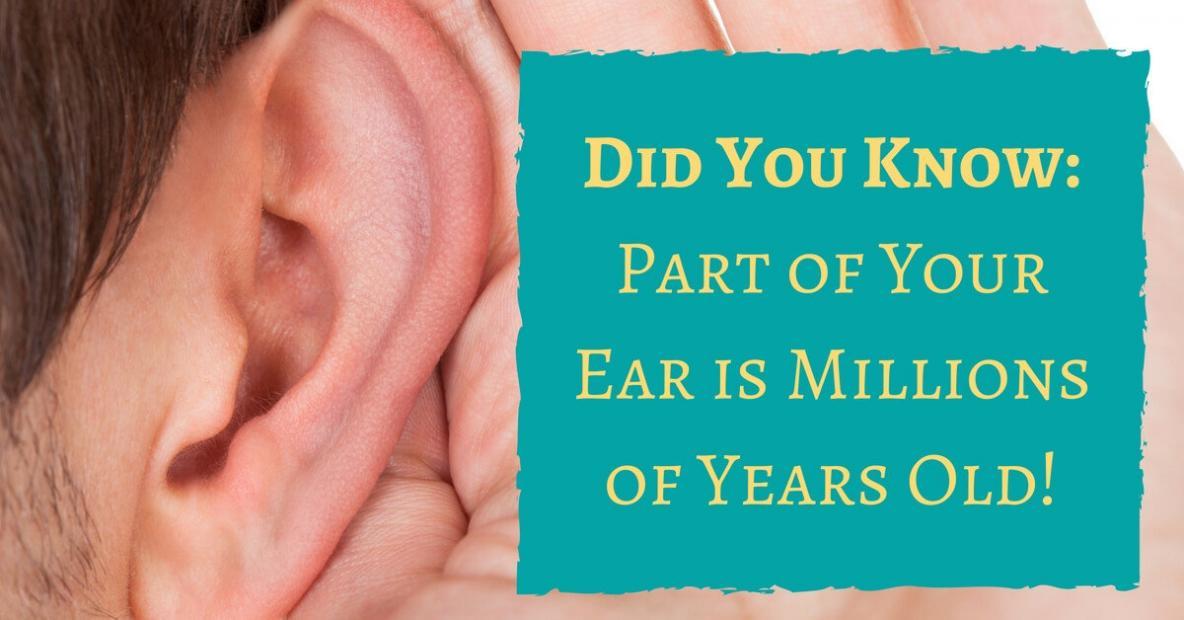0% financing available. Up to 3-year loss and damage guarantee.

Part of Your Ear is Millions of Years Old!
- Navigating the Conversation: The Significance of Thoughtful Disclosure in Hearing Loss - December 10, 2023
- The Sound of Dreams: Understanding How Hearing Loss Impacts Dreaming - November 7, 2023
- Traveling Effectively with Hearing Aids - October 16, 2023
There’s no denying that our ears are intricate and detailed. According to a new study from McGill University in Montreal, Canada, “The transition from being sea creatures to living on land, even if it happened 300 million years ago, seems to have left its traces on the way we keep our balance today.”
Our auditory system is closely linked to our vestibular system, the system that allows us to move around without falling over. Kathleen Cullen, the senior researcher on this study, says, “What we’ve found is that there are two sensory channels that transmit information to the brain about how we move around in the world using fundamentally different approaches. No one has ever demonstrated this kind of thing before.”
On the mysteries of the inner ear, Cullen further elaborates, “But what is even more exciting to us is that we believe that the different ways that each of these channels sends information to the brain is a legacy of the differences between needing to navigate in water and in air.”
“The transition from being sea creatures to living on land … seems to have left its traces on the way we keep our balance today.”
A Tale of Two Systems – Balance and Hearing
Cullen, along with fellow researchers Maurice Chacron and Mohsen Jamali at McGill, recorded and analyzed the activity in the brains of macaques in their daily life. By observing their movements – “doing things like foraging, walking, running, climbing, and grooming – the researchers found that there were two very different kinds of signals being sent to their brains as the monkeys moved around.”
According to Jamali, “We found that it’s because there are two very different kinds of signals that are being transmitted to neurons in the brain to keep us in balance. One is like the fluid stylings of a crooner sliding slowly from one note to the next, the other is rapid and precisely timed – a bit like the beat of a drum as it responds to a guitar solo.”
How did these different signals come about? The environments of our early ancestors have shaped the way our auditory and vestibular systems formed.
Chacron explains, “If you can imagine swimming in the sea, you have a resistance of water along with its muffling, almost viscous effect. So, it makes sense that information about our movements would be transmitted to our brains using these smooth, slowly varying patterns…on land, there is far less resistance than in the water, as we move around we need to be able to perceive and be prepared to react with extreme rapidity in order to keep our balance. That’s where timing with millisecond precision becomes important.”
Vestibular and Auditory System of the Inner Ear
Our inner ears house both the auditory and vestibular system. In terms of hearing, the hair cells of our inner ear are responsible for translating sound vibrations into neural signals that are registered by the brain as sound. Our vestibular system does something similar: it sends signals to the neural structures that control our eye movements and to the muscles that help keep us upright.
The vestibular system, Cullen notes, consists of two components: a semi-circular canal system made of right angles that rotates to help maintain our balance, and ololiths, which help us with linear movement. The movement of fluid in these two components, as well as movement and position hair cells, detects movement and rotation, allowing us to gauge direction and redistribute balance.
How Balance and Hearing Health are Related
The results of McGill University’s study are important because the vestibular system and the auditory system are so intimately linked. With the understanding that there are two channels that exist in the inner ear to keep us balanced, researchers now have a better understanding of how the vestibular system works.
With this new information, Cullen has joined forces with Johns Hopkins University, which has worked intensively on issues related to our auditory system. This collaboration between Cullen and Johns Hopkins hopes to produce vestibular implants to address vertigo and balance disorders.
Any new information on the vestibular system should factor in to our understanding of hearing health. Because the two systems are so closely located and in many ways share the same elements of the inner ear, it is no surprise that hearing-related issues may affect our sense of balance, or vestibular-related issues may affect our sense of hearing. Changes to either systems could impact the mechanisms of the other.
What to Do If You’re Experiencing Issues with Hearing
If you believe you are experiencing a hearing loss, contact us at Advanced Tech Hearing Centers. We provide comprehensive hearing tests and hearing aid fittings.
Advanced Tech Hearing Aid Centers
Reach out to our friendly team today. We look forward to helping you improve your hearing at one of our three convenient locations.
Lancaster | New Holland | Red Lion
(717) 560-5023
